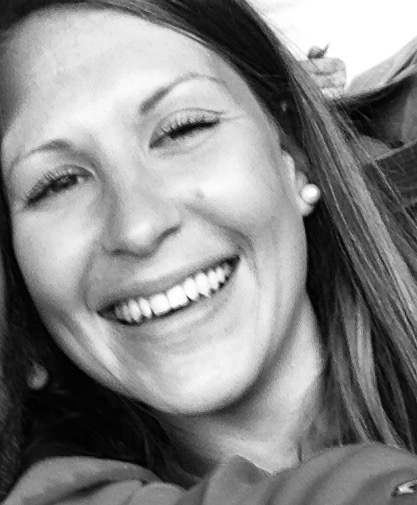
Choose Your Language:
Posted by: The Sumaira Foundation in NMO, Patient, Voices of NMO

The tingling turned to numbness and traveled up and down her body, seemingly at random. She was scheduled for a lupus check up, and told her rheumatologist what was happening. He sent her to a neurologist, who did a full body check and found her to be strong. Still, he sent her for an MRI of brain and spine.
When she went in for the MRI, she was told only the brain scan had been ordered. Adria assumed the doctor had changed his mind.
The brain scan was clean but her body was getting worse and worse. Finally, in screaming agony and crippled by weakness and pain, she called the neurologist again. He said the insurance company had denied the spine scan – had Adria been told at the time, she would have advocated for both scans – but now, because her body was falling apart, they approved.
Her doctor said the swelling of her spine was the most extreme case he’d ever seen. She was sent directly to the emergency room, where, over time, she heard that description again and again. She was given a cocktail of medications, but nobody knew what was happening. About 12 hours later, Adria checked into a room in the neurology ward.
The doctors at the Massachusetts General Hospital administered medications and tests for a full week. Included were a blood test and spinal tap to determine if she had what they suspected – NMO. She was given intravenous steroids (Solumedrol), IVIG (intravenous immunoglobulin) and Rituximab. She responded quickly and well to these remedies, and was sent home.
After a few days, Adria’s vision began to worsen. Then, she received the call – NMO (Neuromyelitis Optica) was indeed the latest autoimmune disease to attack her body. Her previous symptoms returned, and she began to vomit and hiccup uncontrollably. Adria headed back to the hospital. Her improvement had been so dramatic that the nurses were all surprised to see her back.
This time, she was treated with Solumedrol, plasmapheresis and the second dose of Rituximab. Again, her recovery was relatively quick, especially after the plasmapheresis, and Adria was able to walk out of the hospital on her own after ten days. It was early June.
Still, her body wasn’t what it had been. Minor spasms had cramped her legs a few times in the hospital, and when she got home, they became so frequent that she might have one every 5-7 minutes. Eventually, the spasms grew more intense, lasted longer and wracked her entire body. Sometimes she knew what caused them – raising her hand, lifting something, bending, turning her neck. Sometimes, she had no idea. She fell. It got so bad that Adria couldn’t leave home.
Adria also had hot spots around her body such that she’d feel burning inside and was hot to the touch. Sometimes, the heat burned a small part of a foot cold and blue from Raynaud’s syndrome. Adria kept in close email touch with her medical team, and the doctors kept adjusting her medications in response to her descriptions. Over the summer, the spasms became less frequent and less intense, and the remaining symptoms weakened. Adria returned to her life.
On August 28, Adria had her last spasm. On the 30th, she started her final year of law school. She was terrified of what might happen when on campus, but was determined to follow her dream. Her boss, who had not only given her the whole summer off (she is the only paralegal in the office), insisted she work only part-time come the fall, in order not to stress her body too much.
Adria says that his support was extraordinary, and is most grateful. Her boyfriend, Nick, cared for her above and beyond what she ever could have hoped. She is also deeply grateful for her
medical team at MGH. They were amazing – caring, interested, kind, involved, compassionate and hopeful, as well as brilliant. She is thankful to have been diagnosed within a month of her first attack.
Adria had three autoimmune conditions before being diagnosed with NMO. She was tired of “being that girl with the issues”, and didn’t want to tell her friends or family what was happening at first. As things worsened, of course, she was forced to own up to the mysterious monster taking control of her body. Still, she downplayed it all, kept a sense of humor and let the love of those around her fill her and carry her through.
Adria is back doing what she wants to do. She is in school and back at work. NMO isn’t stopping her. She says there is no option but to be positive and optimistic. Hey! Only four autoimmune diseases. Every NMO symptom in the book. But according to Adria, it could have been worse and she is grateful.
This post was written by Gabriela Romanow, Chief Community Relations Officer, on November 29, 2016.
Notifications